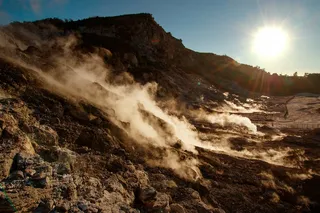Planets get most of the attention when it comes to astronomical discussions. Their moons, on the other hand, are a bit more obscure. Neptune, Jupiter and Saturn are well-known names, but what about Enceladus, Io, and Titan?
A whopping 293 moons, most of which are small enough to resemble asteroids, dance around the planets of our solar system. The universe is not concerned about equal distribution here, either: For example, Venus has no moons, Earth has one, and Saturn has a staggering 146.
These moons, or natural satellites as they’re sometimes called, are also not built equally. From plasma-spewing hellscapes to a frigid land with air so thick a human could don a winged suit and take flight, these extraterrestrial moons are fascinating worlds in their own right, and may even be unexpected candidates for harboring life.
(Credit: Gwengoat/Shutterstock)
Gwengoat/Shutterstock
We’ll start this list with a bang. Io — one ...














